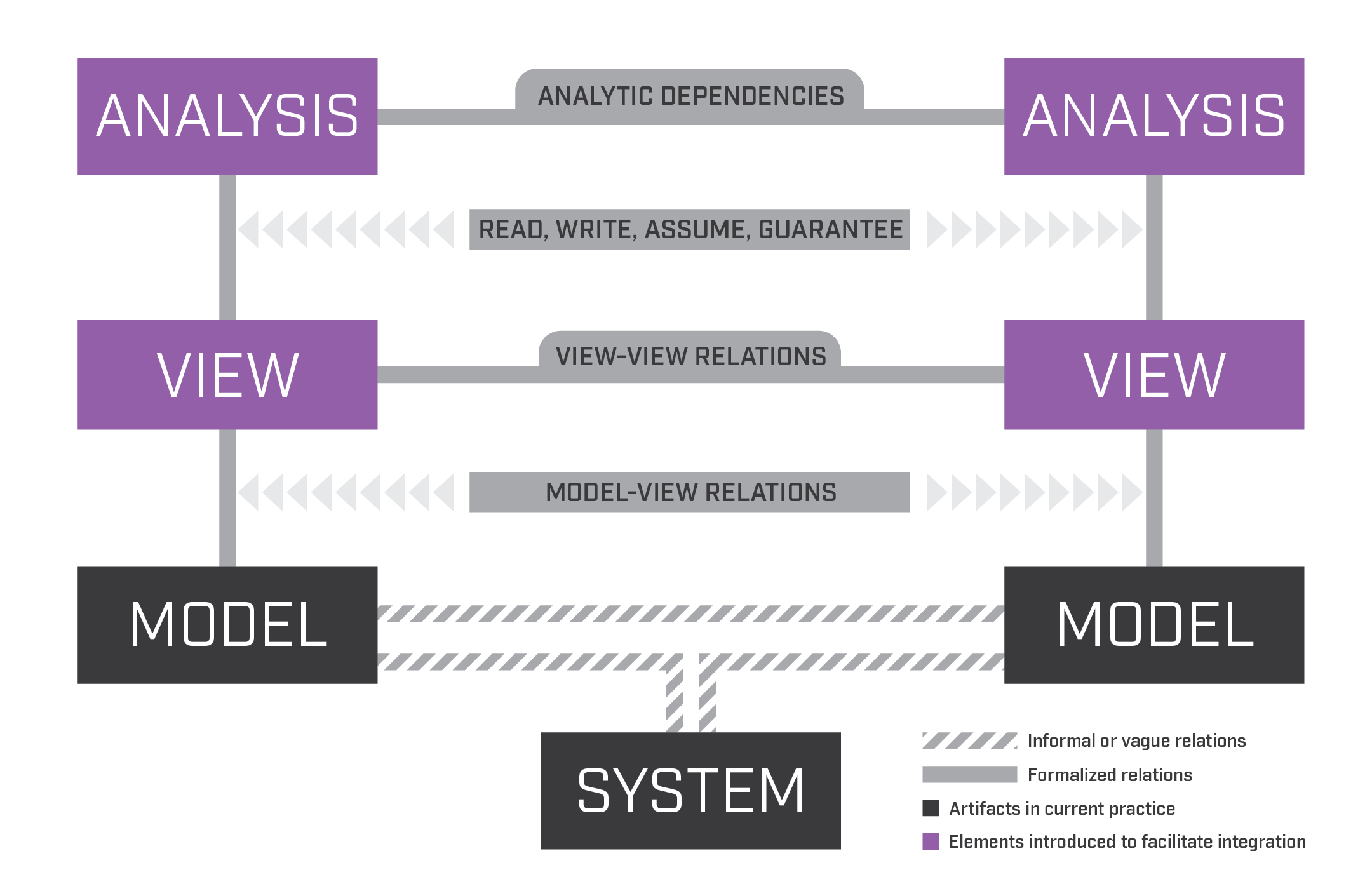Cyber-Physical Systems and Internet-of-Things
- Heterogenous modeling, analysis, and verification of cyber-physical systems, where we take an architectural aproach to modeling and analysis of cyber-physical systems.
- Human Assistance for IoTPatterns and techniques for designing systems that collaborate and provide assistance to humans
Heterogeneous Modeling, Analysis, and Verification of Cyber-Physical Systems
Project Description
In this research project we are addressing the issue of heterogeneity and lack of integration between modeling methods that are used for engineering Cyber-Physical Systems (CPS). Modeling methods that come from diverse scientific fields (such as control theory, mechanical engineering, computer science) often disagree on the basic elements of system modeling (e.g., level of abstraction, time, data flow, control flow, and determinism). If not handled properly, these disagreements may lead to subtle bugs, which can cause catastrophic system failures.
Research
|
Our Position: We take an architectural approach to heterogeneous modeling of cyber-physical systems. The key insight of our approach is that architectural models (views) can be used as an abstraction to integrate otherwise incomparable models. Domain specific analyses can operate on appropriate views within a managed environment that detects and prevents inconsistencies. Our research focuses on providing a framework of architectural views and analyses as plugins that are easily integrated with existing models and tools, such as AADL, Simulink, KeYmaera, Modelica, etc. |

|
Sample Questions
- What are the appropriate architectural abstractions for representing physical, control, and hybrid models and their interactions with software?
- How can we provide architectural views to represent heterogeneous models of cyber-physical systems?
- How do we define and verify consistency between different models and views?
- How can we integrate analyses that originate in different engineering disciplines?
- How can we verify across multiple different models?
Contacts
David Garlan, Bradley Schmerl, Ivan Ruchkin.
Landmark Papers
Related Papers
Human Assistance for IoT
Project Description
As the Internet of Things becomes a reality, research has focussed on how to connect everyday objects. A remaining challenge is how do we design software that has a symbiotic relationship between humans and the physical systems they interact with? In this research, we are examining architectures and formalisms that support software as assistants.Research
Our Position: For the internet of things to become truly useful, and the vision of pervasive computing to be realized, software design needs to consider humans as an integral part. The connectedness of many things is not useful without overarching software to provide assistance to humans in their everyday tasks.
Sample questions:
- What architectural styles are needed for task assistance?
- How can we incorporate artificial intelligence into such systems?
- How can task planning consider human elements of the tasks?